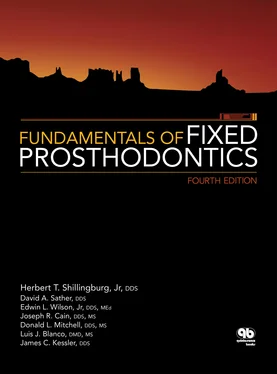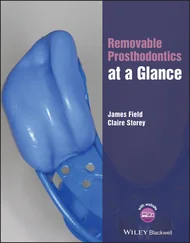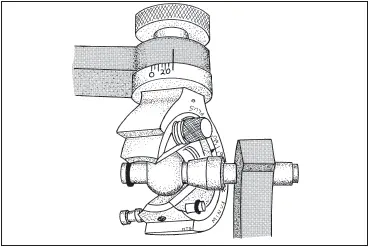
Fig 5-65The Bennett angle ring is rotated to 30 degrees.
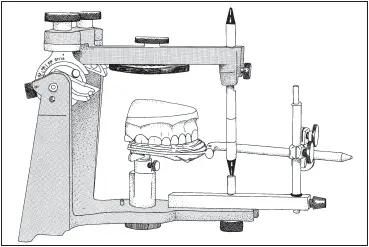
Fig 5-66The maxillary cast is oriented to the articulator by the bite fork assembly in the mounting guide.
The reference pointer is rotated back over the right temple of the bow, and the thumbscrew is tightened enough to hold it there. While the patient opens, the ends of the bow are grasped, and the earpieces are removed from the auditory meati. It should be held firmly because the bow is made of spring steel and could snap back. The bow is slid away from the patient. The facebow, earpieces, and bite fork are disinfected with a hospital-grade disinfectant before continuing.
Mounting the maxillary cast
The articulator is prepared to accept the casts by setting the inclination of the enclosed condylar track mechanisms at 30 degrees on each side ( Fig 5-64). The Bennett angle ring for the progressive mandibular lateral translation should be set at 30 degrees ( Fig 5-65).
Petrolatum is used to lubricate the surfaces of the upper and lower members of the articulator around the threaded mounting studs. Then a clean mounting plate is firmly secured to the mounting stud on the upper member of the articulator. A mounting guide or platform is attached to the lower member of the articulator. The thumbscrew on the front of the facebow is loosened, and the bite fork assembly is removed. The vertical transfer rod of the assembly is placed into the hole at the front of the mounting guide and secured by tightening the screw. The cast support is adjusted to touch the underside of the wax on the bite fork ( Fig 5-66).
The maxillary cast is soaked in a plaster bowl, but the teeth should not be covered with water. The maxillary cast is carefully seated into the imprints in the baseplate wax on the bite fork. The upper member of the articulator is raised, and a golf ball–sized mound of thick, creamy mounting stone is placed on the base of the cast. The upper member of the articulator is swung down until the incisal pin is resting on the mounting guide or the anterior table, depending on the type of guide used. Stone must be engaging the cutouts in the top of the mounting plate. More stone is added if necessary, and the top is smoothed off with a spatula. When the stone has set completely, the bite fork assembly and mounting guide are removed from the articulator. All registration material is removed from the bite fork, which is then placed in a sealed sterilization bag and submitted for steam sterilization. A clean mounting plate is attached to the lower member of the articulator.
Mounting the mandibular cast
The incisal guide pin is extended 1 to 2 mm to compensate for the thickness of the interocclusal wax record. The centric lock is tightened on each enclosed condylar track mechanism to ensure that the articulator is capable of only a hinge opening.
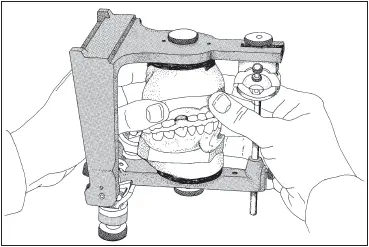
Fig 5-67The mandibular cast is held steady in the wax record while the mounting stone sets.
The articulator is inverted on the bench, resting on the three thumb nuts protruding from the upper member of the articulator. The centric relation interocclusal wax record is placed on the teeth of the maxillary cast. The teeth must seat completely into the wax record.
The mandibular cast is placed into the interocclusal record, and complete seating is again confirmed. There should be no contact between the maxillary and mandibular casts. The mandibular cast is removed and soaked for about 2 minutes. To prevent any erosion of the teeth on the cast, they must not be covered by water. The soaked mandibular cast is reseated into the record. The lower member of the articulator is swung up and back. A mound of thick, creamy mounting stone is placed on the bottom of the cast. Enough is applied to the mounting plate on the lower member to fill the cutout slots on either side of it. The lower member of the articulator is hinged back over into the soft mounting stone. The incisal guide pin should be resting firmly against the incisal guide table. A hand is used to steady the mandibular cast in the retruded position wax registration until the mounting stone has achieved an initial set ( Fig 5-67).
The articulated casts are inspected for the following criteria:
The condyle is in the retruded position in its condylar track mechanism.
Both casts are seated completely in the interocclusal wax record.
Mounting stone is securely attached to both casts and mounting plates.
After the mounting stone has achieved a final set, the accuracy of the mounting is corroborated. The articulator is opened, and the incisal guide pin is raised so that it will not touch the incisal table when the teeth are contacting. The interocclusal record is removed, and a 2-inch piece of no. 10 red-inked silk ribbon is placed between the posterior teeth on both sides. The teeth are tapped together lightly, producing red marks on the teeth where they contact in the retruded position.
The pieces of 28-gauge green wax are retrieved and carefully positioned on the teeth of the maxillary cast. If the cast mounting is correct, the red marks on the teeth will be visible through the perforations in the wax. If they are not visible, the procedure should be rechecked step by step and the error corrected.
The mounting plates are unscrewed, and the casts are removed from the articulator. The plates and attached mounting stone are soaked in water. More mounting stone is added wherever it is needed to fill voids between the casts and the mounting plates. The additional stone is smoothed as it sets to give it a neat appearance. Care should be taken not to leave any stone on the surface of the mounting plate that will contact the articulator frame. It has been said that sloppy cast mountings are not an indication of a poor operator; they are absolute proof.
Setting condylar guidance
Wax lateral or protrusive interocclusal records are used for setting the condylar inclination of this instrument. Note that when lateral interocclusal records are employed, the left record is used for the right condylar inclination and the right record for the left condylar inclination. The thumb nut is loosened at the rear of each condylar track mechanism so that it can be easily rotated. At this time, however, the condylar inclination should be left at 30 degrees. The incisal guide pin should still be raised out of contact with the incisal table.
The right interocclusal record is seated on the teeth of the mandibular cast. The upper member of the articulator is gently lowered until the maxillary teeth engage the wax record. The left condylar guide is adjusted by changing the condylar inclination with the thumb nut located at the rear of the guide. The teeth on the right side of the cast will rock in and out of the record. If the condylar path is too shallow, the anterior teeth will be drawn out of the wax record ( Fig 5-68a). When the path becomes too steep, the posterior teeth become unseated ( Fig 5-68b). The correct condylar inclination has been determined when the cast is seated completely in the wax record ( Fig 5-68c). The nut at the rear of the condylar guide is tightened.
The thumb nut on the top of each condylar guide of the articulator is loosened. The Bennett angle ring is slowly rotated outward (from 30 toward 0 degrees) until the flat side on the outer aspect of the condylar ball contacts the inner surface of the sleeve on the condylar shaft, forming brassto- brass contact ( Fig 5-69). This process is repeated on the right side.
Читать дальше
